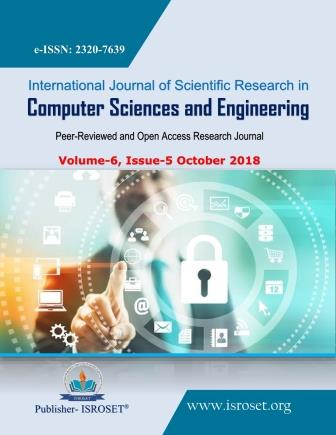Secure and Efficient Multipath Routing Using Overlay Nodes
Keywords:
Geo Wireless Network, Backpressure Routing, Overlay nodes, ThroughputAbstract
Wireless network consists of intermittently connected nodes which forms clusters with nearest neighboring nodes. Over such networks it is well-known that traditional routing algorithms perform very poorly because every node in network participates in routing decision. To provide optimal multipath routing, such that only subset of nodes involve in routing decisions to bifurcate traffic to achieve maximum throughput. In this paper, we propose a overlay architecture for multipath routing such that only few nodes involved in network to make dynamic routing decisions. For that we focus on two aspects. First, overlay node placement algorithm is developed to choose a subset of nodes (overlay nodes) and prove that only few nodes are sufficient to achieve maximum throughput of network. Second, dynamic routing policy (OBP) is proposed which apply on overlay nodes which splits traffic to route packets on multi paths. The proposed overlay architecture and routing algorithm implemented on NetBeans-IDE using java as programming language. Experimental results show that our proposed algorithm provides better throughput and reduced delay compared to existing backpressure routing technique.
References
Nathaniel M. Jones, “An Overlay Architecture IEEE/ACM Trans. on networking, Massachusetts Institute of Technology, 2018.
A. Rai, C.-P. Li, G. Paschos, and E. Modiano,“Loop free backpressure routing using link-reversal algorithms,” in Proc. ACM MobiHoc, Jun. 2015, pp. 87–96
D. Xu, M. Chiang, and J. Rexford, “Link-state routing with hop-by-hop forwarding can achieve optimal traffic engineering,” IEEE/ACM Trans. Netw., vol. 19, no. 6, pp. 1717–1730, Dec. 2011.
J.Ryu, L. Ying, and S. Shakkottai, “Back-pressure routing for intermittently connected networks,” in Proc. IEEE INFOCOM, Mar. 2010, pp. 1–5.
L. Bui, R. Srikant, and A. Stoylar, “Novel architectures and algorithms for delay reduction in back-pressure scheduling and routing,” in Proc. of IEEE INFOCOM, 2009
L. Ying, S. Shakkottai, and A. Reddy, “On c ombining shortest-path and back-pressure routing over multihop wireless networks,” in Proc. IEEE INFOCOM, Apr. 2009, pp. 1674–1682.
L. Ying, R. Srikant, and D. Towsley, “Cluster-based back-pressure routing algorithm,” in Proceedings of IEEE INFOCOM, Phoenix, AZ, April 2008.
K. Fall, “A delay-tolerant network architecture for challenged Internets,” in Proc. of SIGCOMM, 2003.
B. Fortz and M. Thorup, “Internet traffic engineering by optimizing OSPF weights”, in the Proc. IEEE INFOCOM, Mar. 2000, pp. 519–528.
L. Tassiulas and A. Ephremides, “Stability properties of constrained queueing systems and scheduling policies for maximum throughput in multihop radio networks,” IEEE Trans. Autom. Control, vol. 37, no. 12, pp. 1936–1948, Dec. 1992.
Downloads
Published
How to Cite
Issue
Section
License

This work is licensed under a Creative Commons Attribution 4.0 International License.
Authors contributing to this journal agree to publish their articles under the Creative Commons Attribution 4.0 International License, allowing third parties to share their work (copy, distribute, transmit) and to adapt it, under the condition that the authors are given credit and that in the event of reuse or distribution, the terms of this license are made clear.







